
Jump to:
When are nectarines in season?
Both yellow and white nectarines are in-season at the same time. Their ripening dates are dependent on the specific variety, and both colors have early, mid, and late-season varieties available.
They are in season from about May through October with the peak season in July and August. California provides about 98% of nectarines in the US because of the favorable hot and dry growing climate.
However, many farmers around the country do grow nectarines and peaches, so you should check your local farmers markets, probably in July and August. You can also look for a UPick farm near you to get even fresher nectarines.
Is a nectarine really a peach?
Nectarines are actually a type of peach without the fuzz. They are the same genetically, and just one recessive gene is responsible for the fuzzless skin.
But that doesn't mean they taste the same (as you've probably noticed). Nectarines definitely have similar flavor to peaches, but distinct differences too. Nectarines tend to be smaller, firmer, and have more honey-like aromas.
Signs of a ripe nectarine
Squeezing a nectarine isn't the best indicator of flavor, it just tells you if it is ready to be eaten right now. To find the best flavor, there's a few other things to look for.
Color: undertones
The first thing to do is look past the beautiful red color, as hard as that is to do. It's not the best indicator of ripeness, especially since newer varieties have been bred specifically to have more red color. That color sells well and makes them appear flavorful, even when picked too early.
Instead, look for the 'background' color (the undertone).
- A yellow nectarine should have golden undertones
- A white nectarine should have have pale-yellow undertones
- If you see greenish hues on either white or yellow nectarines, they were picked too early
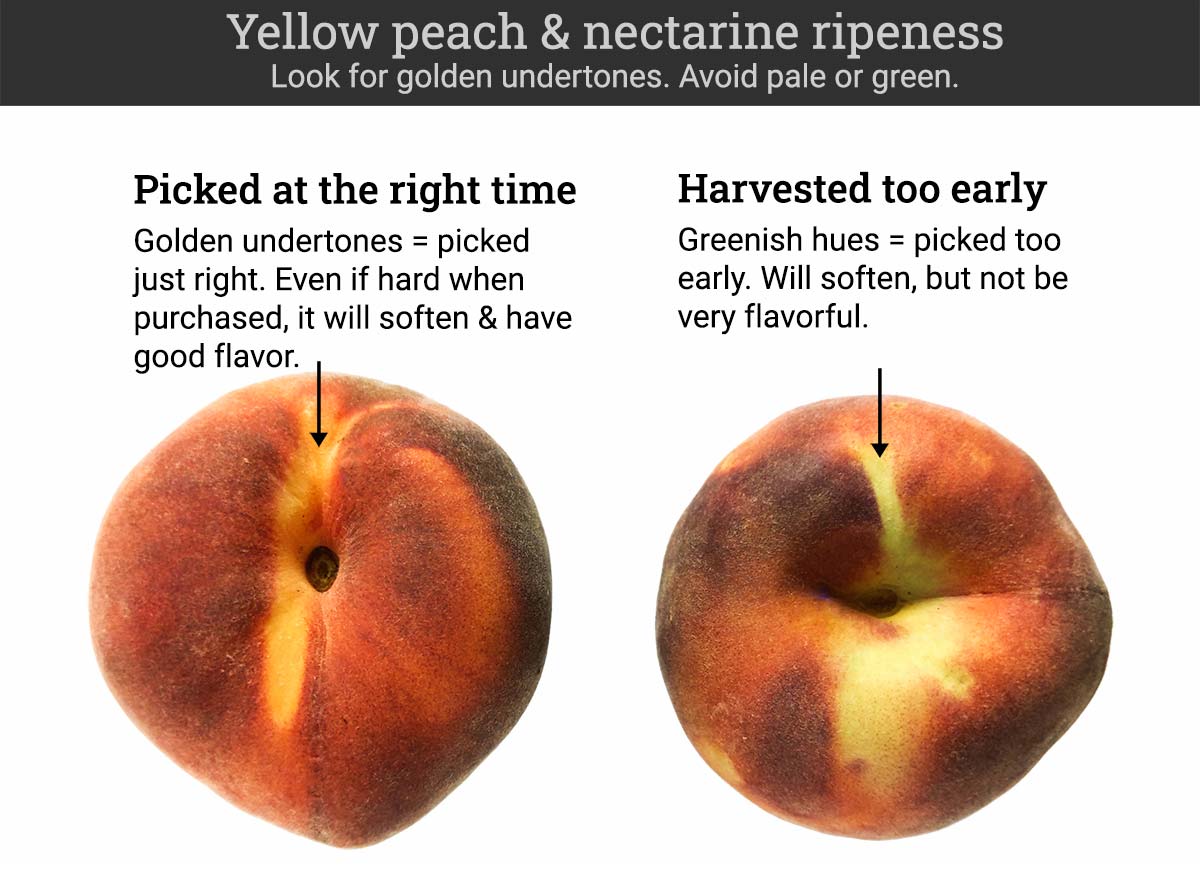

Aroma
Probably the most reliable way to pick a good-tasting nectarine is by smell. It will have a sweet, strong aroma (even more than peaches).
Stem end
The stem end should be full and plump. Look for a yellow stripe across the top that is indented. As the fruit ripens on the tree, it pushes against the branch. This creates an indent and shades it from the sun (preventing the skin from turning red).
This is the easiest spot to look for the undertones.

Hard vs soft
In order to get it to you, they must be picked before fully softening on the tree. If you are using the fruit right away, buy ones that are slightly soft (those have likely been in the store longer, softening on their shelves instead of your counter).
Otherwise, hard ones will last longer and soften on your counter. At a farmers market, you can tell them what you are using the nectarines for and when, and they'll likely pick out the best ones for you.
Nature
I grow peaches and even though I water correctly and harvest at the right time, each peach differs in the quality of flavor. When I pick several seemingly-identical peaches at the same time, they will be surprisingly different. One will be really juicy and lack flavor, the next will be the best peach I've ever had.
Growing fruit is part science and part luck, thanks to Mother Nature. I suggest buying several nectarines and not judging the grower or your own ability to pick the 'good ones' on just a handful of experiences.
How to store
Soft nectarines should be stored in the fridge if they aren't being eaten right away. Their quality will remain good for a few days, after which their flavor and texture might deteriorate.
Hard nectarines can be left on the counter, preferably out of direct sunlight. They will usually soften enough to eat in 1-3 days. Once soft, you can store them in the fridge if you're not ready to eat them.
White vs yellow
Just like peaches, white and yellow nectarines have similar sugar levels. However, white nectarines taste sweeter because they have less acid than the yellow varieties. Acid impacts our tastebuds, decreasing our perceptions of sugar (and increasing sourness).
People are split on whether white or yellow nectarines taste better. Those who prefer white nectarines love the extra honey sweet flavor enjoyed during peak season. Those who favor the yellow varieties like more complex profile thanks to the higher acid levels and sometimes think white nectarines fall flat.
Recipes
It's much harder to find nectarine recipes than ones for peaches. The good news is nectarines can be substituted in almost any peach recipe (and are often a better option as they don't have to be peeled).
Breakfast
Salads & appetizers
Dinner
Dessert
Substituting nectarines for peaches
Because of their similarities, nectarines can be used interchangeably with almost any peach recipe. In fact, sometimes nectarines are preferred for their smooth skin and firmer flesh.
If you've ever tried to peel peaches and been frustrated with the slow process, try using nectarines and leaving the skins on.
Pies, cobblers, and tarts
Traditional peach pies & cobblers can easily use nectarines and might actually turn out better. That's because the firmer nectarine flesh softens when cooked, but still holds it shape. It's the same reason that yellow peaches are better for pies than white ones (which have softer flesh).
Peaches' fuzzy skin can be distracting in a tart, so they are most often skinned. If you want to skip that fuss, use nectarines. They don't have to be peeled since their smooth skin is barely noticeable.
Grilling
Soft-fleshed fruit doesn't hold up well to grilling, like really ripe peaches or nectarines. You'll want to use fruit that hasn't ripened to that super soft stage. The typically firmer nectarine flesh comes in handy again - holding up to grilling better than peaches.
Salsas, chutneys, and other sauces
Recipes that require peeling a peach can instead use an unpeeled nectarine, saving you time. From a summer salsa to a sauce for grilled pork. The only exception would be anything pureed - as the skin might still need to be removed, even from a nectarine.
Canning - maybe not
Canning requires specific acid levels to do so safely. I wouldn't substitute nectarines for peaches, as the acid value could be different enough to cause problems. In fact, most experts advise only canning yellow peaches, because white ones have less acid, sometimes dropping below the levels needed for safe canning.
Why you shouldn't peel nectarines
Leaving the skin on a nectarines not only saves you time, it improves the flavor. The skin contains a lot of aromas and flavor (like many other fruits & vegetables). Keeping the skin intact for pies, tarts, salsas, etc, provides more flavor.
The skin can also bleed a little red dye into your recipes. This can be used on purpose to do things like dye ice cream a light pink.
Lastly, it can be hard to peel nectarines without bruising them, losing too much flesh, or getting juice everywhere. So if isn't necessary - you can just skip the trouble and leave the skin on.
What else is in season?
See what else is in season at the same time: May, June, July, August, September, and October.



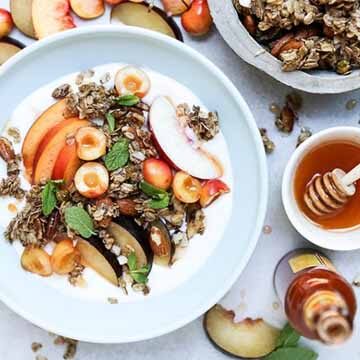


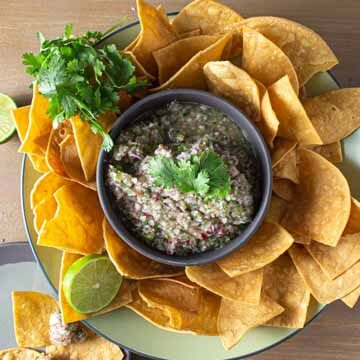
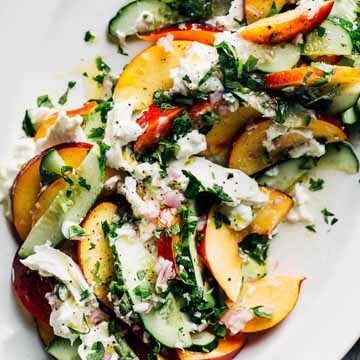


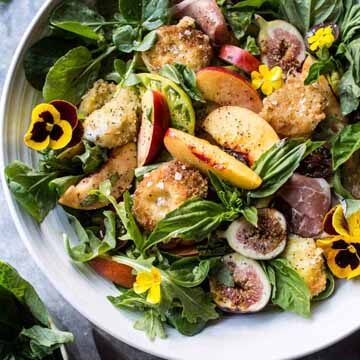

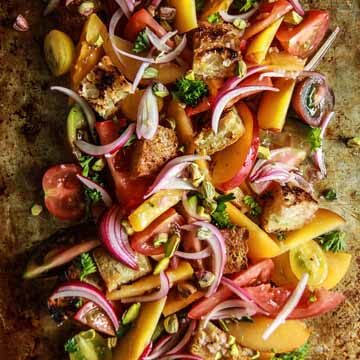
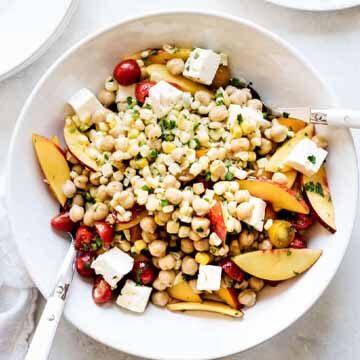




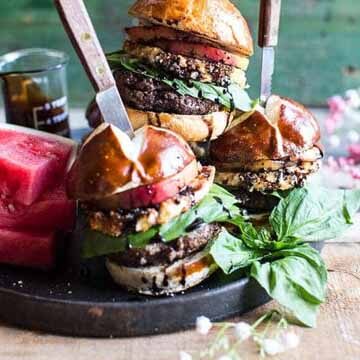













Rodrigo Vildosola says
Thank you I appreciate all your help.
Rodrigo Vildosola says
Who grows dwarf nectarines trees. I need to contact them personally. I’m a doctor and making some research on that particular plant
Vee says
I would reach out to UC Davis, as they have a great agricultural program and might be able to put you in contact with someone.
Rodrigo Vildosola says
Thank you
Wendy says
Very interesting read. Thank you.
GREGORY says
Well done . Thank you for the information